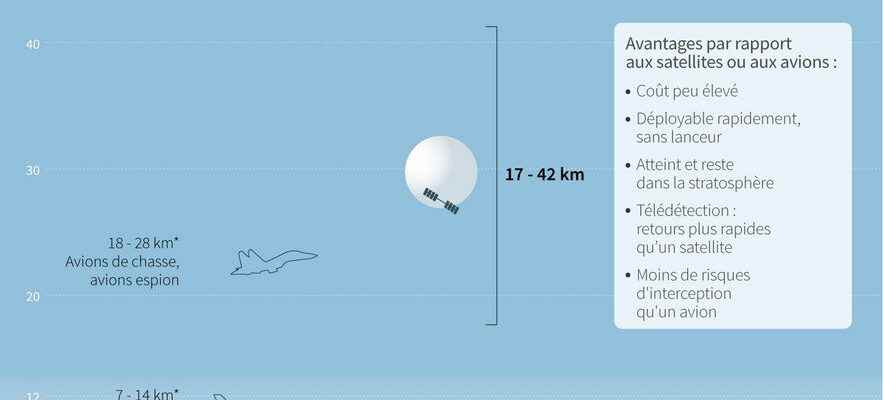The United States announced on Saturday February 4 that it had shot down the Chinese balloon – spy for some, meteorological for Beijing – spotted four days earlier flying at high altitude over their territory. The operation was carried out by an F-22 fighter jet “over water off the coast of South Carolina in United States airspace,” the Defense Secretary said in a statement. American, Lloyd Austin. He stressed that it was carried out in response to an “unacceptable violation” of American “sovereignty”.
“China expresses its strong dissatisfaction and protests against the use of force by the United States,” the Chinese foreign ministry said in a statement, adding that it “reserved the right” to retaliate. Washington “clearly overreacted” and “seriously violated international practices”, he added.
The Pentagon says it was a spy balloon. This “was used by the People’s Republic of China in an attempt to monitor strategic sites” in the United States, said Lloyd Austin. President Joe Biden congratulated the pilots who “successfully” carried out this delicate operation. He said he had given the order on Wednesday to shoot down the balloon “as soon as possible”, but that the Pentagon wanted to wait “for the safest place to do so” in order to avoid any damage to the ground when the balloon fell. any debris. The move was also welcomed by Canadian Prime Minister Justin Trudeau. “Together […] we will continue to protect and defend ourselves,” he said in a tweet on Saturday.
Recovery operations, which may involve divers, were now underway. The debris is in shallow water. “That’s going to make things pretty easy,” a senior military official said. On videos broadcast by television channels on Saturday, the ball appeared to fall vertically after an impact. It was, at the time, about 18 kilometers above sea level and 11 kilometers from the coast, according to Pentagon officials. Shortly before, air traffic had been suspended at three airports in the southeastern United States as a “national security” measure, the American civil aviation regulator (FAA) announced. It was one airport in North Carolina and two in South Carolina. Traffic resumed shortly after the operation ended.
“Analyze Technology”
This case has cast a chill over relations between Washington and Beijing, causing the postponement of a visit by the head of American diplomacy Antony Blinken to China. The visit would have been the first by a U.S. secretary of state since October 2018. According to Pentagon officials, the balloon first entered U.S. airspace on January 28 over Alaska, before landing. entering Canada on January 30, then re-entering American airspace at Idaho, in the northwestern United States, on Tuesday January 31.
High altitude balloons
© / afp.com/Nalini LEPETIT-CHELLA
But the Americans only learned of the balloon’s existence on Thursday, when it was over Montana, which is home to nuclear missile silos. He then gradually moved towards the east of the country. Beijing acknowledged that the aircraft had come from China, but assured that it was a “civilian aircraft, used for research purposes, mainly meteorological”.
It would have “deviated from its trajectory”, added a spokesman for the Chinese Ministry of Foreign Affairs, expressing the “regrets” of his country for this “involuntary” violation of American airspace. “I salute President Biden’s leadership for shooting the Chinese balloon over water to keep all Americans safe,” Senate Democrat Leader Chuck Schumer tweeted on Saturday. “Now we can collect the equipment and analyze the technology used” by China, he added.
On Friday, the Pentagon said a second Chinese balloon had been spotted over Latin America. “Chinese surveillance balloons briefly passed over the United States at least three times during the previous administration, and once at the beginning of this administration as far as we know, but never for this long,” said an official on Saturday. senior American official.
